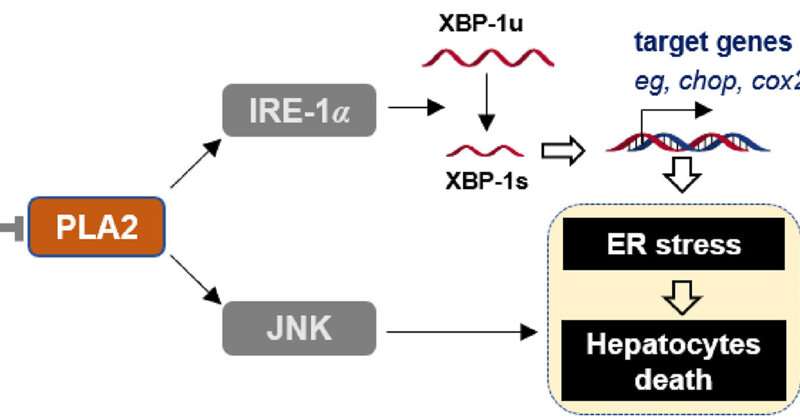A natural PLA2 inhibitor for treatment of metabolic dysfunction-associated fatty liver disease

A study in Acta Pharmaceutica Sinica B discusses the identification of a natural PLA2 inhibitor from the marine fungus Aspergillus sp. c1 for MAFLD treatment that suppressed lipotoxicity by inhibiting the IRE-1α/XBP-1s axis and JNK signaling.
Lipotoxicity is a pivotal factor that initiates and exacerbates liver injury and is involved in the development of metabolic-associated fatty liver disease (MAFLD). However, there are few reported lipotoxicity inhibitors.
The authors of this article identified a natural anti-lipotoxicity candidate, HN-001, from the marine fungus Aspergillus sp. C1. HN-001 dose- and time- dependently reversed palmitic acid (PA)-induced hepatocyte death.
This protection was associated with IRE-1α-mediated XBP and provides-1 splicing inhibition, which resulted in suppression of XBP-1s nuclear translocation and transcriptional regulation. Knockdown of XBP-1s attenuated lipotoxicity, but no additional ameliorative effect of HN-001 on lipotoxicity was observed in XBP-1s knockdown hepatocytes.
Notably, the ER stress and lipotoxicity amelioration was associated with PLA2. Both HN-001 and the PLA2 inhibitor MAFP inhibited PLA2 activity, reduced lysophosphatidylcholine (LPC) level, subsequently ameliorated lipotoxicity. In contrast, overexpression of PLA2 caused exacerbation of lipotoxicity and weakened the anti-lipotoxic effects of HN-001.
Additionally, HN-001 treatment suppressed the downstream pro-apoptotic JNK pathway. In vivo, chronic administration of HN-001 (i.p.) in mice alleviated all manifestations of MAFLD, including hepatic steatosis, liver injury, inflammation, and fibrogenesis. These effects were correlated with PLA2/IRE-1α/XBP-1s axis and JNK signaling suppression.
These data indicate that HN-001 has therapeutic potential for MAFLD because it suppresses lipotoxicity, and provide a natural structural basis for developing anti-MAFLD candidates.
More information:
Yong Rao et al, Identification of a natural PLA2 inhibitor from the marine fungus Aspergillus sp. c1 for MAFLD treatment that suppressed lipotoxicity by inhibiting the IRE-1α/XBP-1s axis and JNK signaling, Acta Pharmaceutica Sinica B (2023). DOI: 10.1016/j.apsb.2023.08.032
Provided by Compuscript Ltd